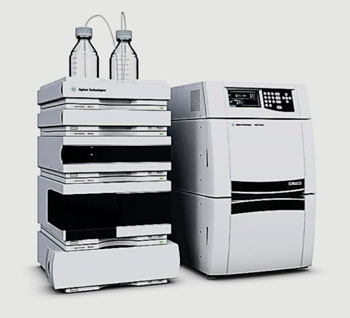Nonradioactive Serotonin Release Assay Compared to Gold Standard
By LabMedica International staff writers
Posted on 01 Feb 2016
The serotonin release assay (SRA) is considered the gold standard laboratory test for heparin-induced thrombocytopenia (HIT) and the classical SRA method uses platelets loaded with radiolabeled serotonin to evaluate platelet activation by HIT immune complexes.Posted on 01 Feb 2016
Laboratory tests for HIT consist of immunoassays, usually enzyme-linked immunosorbent assays (ELISAs), and functional platelet activation assays. Immunoassays detect the presence of immunoglobulins that bind heparin: PF4 complexes, while functional tests detect platelet activation by immune complexes consisting of macromolecular aggregates of heparin: PF4 and antibody.
Scientists at the ARUP Laboratories Institute (Salt Lake City, UT, USA) and their colleagues have validated the performance characteristics of a high-performance liquid chromatography (HPLC) SRA method. The team used serum samples stored frozen until the time of evaluation that had been submitted to their laboratory for HIT testing. Reagent platelets were obtained by collecting blood from healthy donors known to be reactive and with no history of HIT, platelet dysfunction, or current nonsteroidal anti-inflammatory drugs (NSAID) use.
Assay setup was automated on a JANUS liquid handling system (PerkinElmer, Waltham, MA, USA), although platelets were pipetted manually. Serotonin released from reagent platelets was quantitated (ng/mL) by HPLC on a gel permeation chromatography (GPC), size exclusion chromatography (SEC), 1260 instrument (Agilent Technologies; Santa Clara, CA, USA) with fluorescent detection (excitation 285 nm, emission 345 nm). Results were expressed as percentage release and classified as positive, negative, or indeterminate based on previously published cutoffs.
The serum samples from 250 subjects with suspected HIT were tested in the HPLC-SRA and with the radioactive method. Concordant classifications were observed in 230 samples (92%). Sera from 41 healthy individuals tested negative. Between-run imprecision studies showed standard deviation of less than 6% release for positive, weak positive and negative serum pools. Stability studies demonstrated stability after two freeze–thaw cycles or up to a week of refrigeration.
The authors concluded that the HPLC-SRA has robust performance characteristics, equivalent to the classic radioactive method, which has long been considered the gold standard assay for HIT. Results from nonradioactive SRA methods using novel serotonin detection methods provide equivalent information to radioactive methods for HIT diagnostic algorithms but avoid the laboratory complexities of working with radioactivity. The HPLC-SRA method has been optimized to accommodate the demands placed on our high-volume reference laboratory by use of an automated dilutor to perform many pipetting steps and laboratory-developed software to perform calculations. The study was published in the February 2016 issue of the International Journal of Laboratory Hematology.
Related Links:
ARUP Laboratories Institute
Perkin Elmer
Agilent Technologies










 (3) (1).png)





